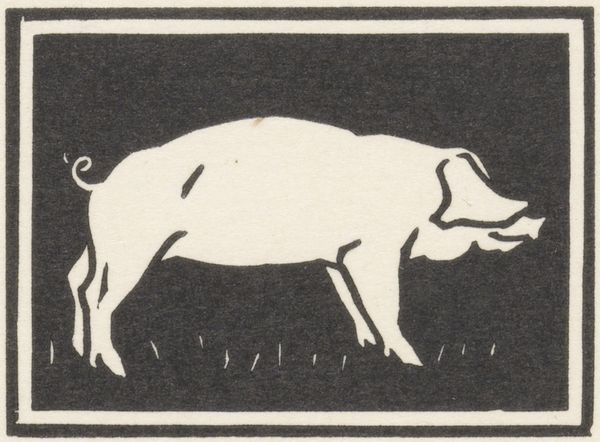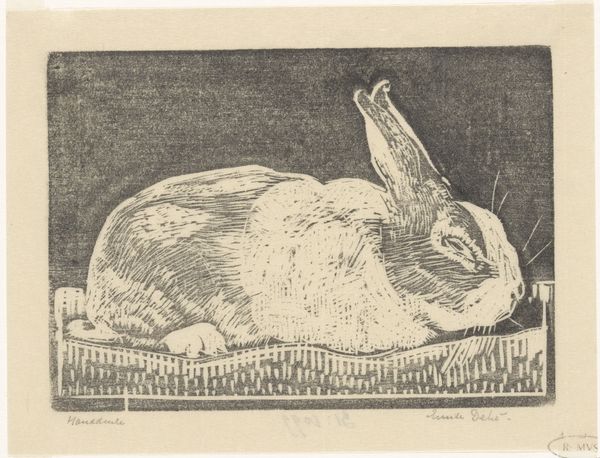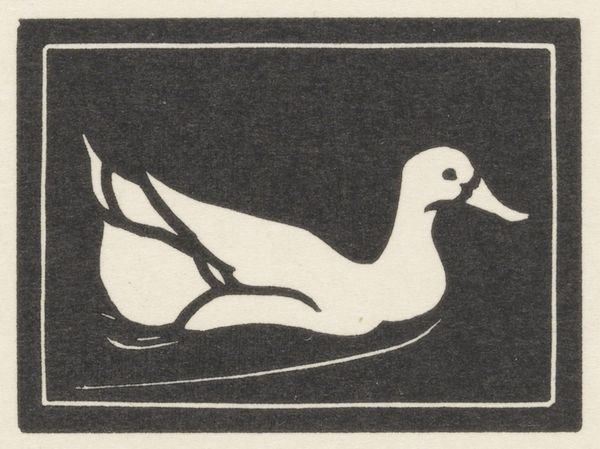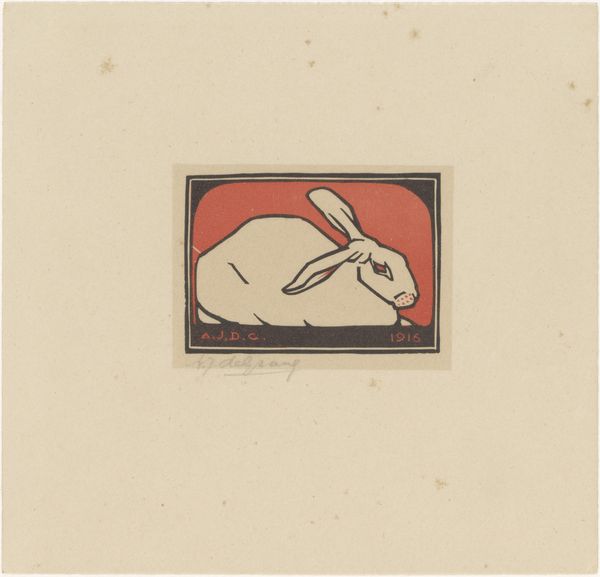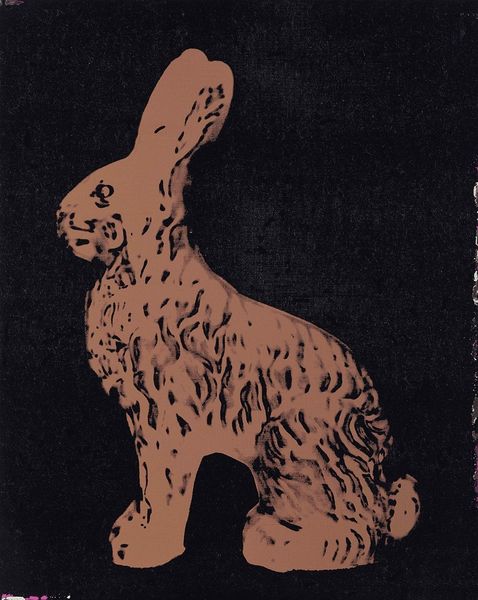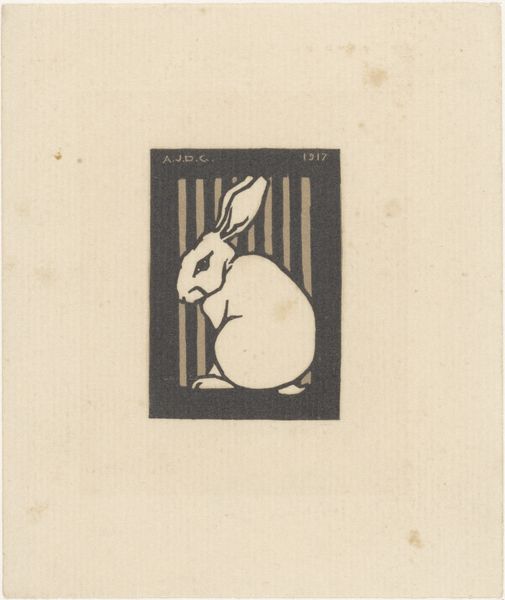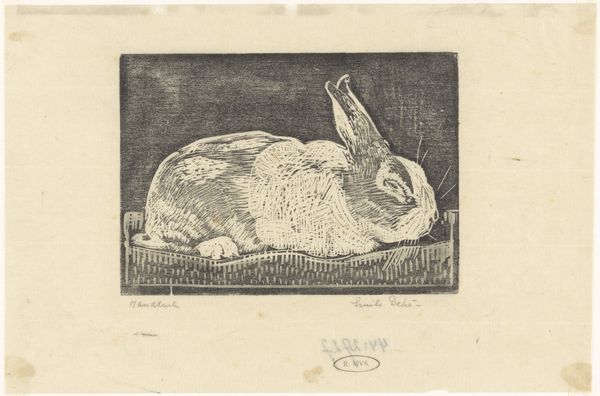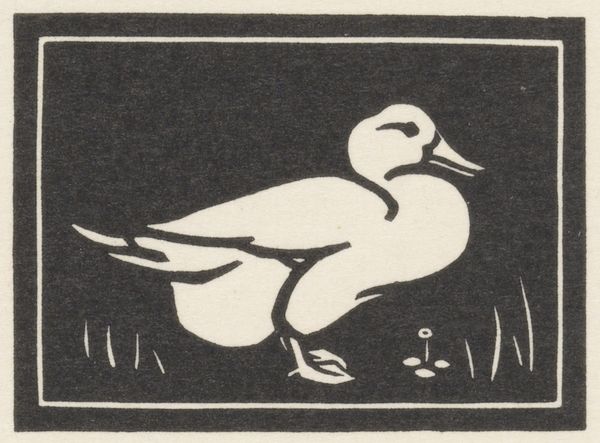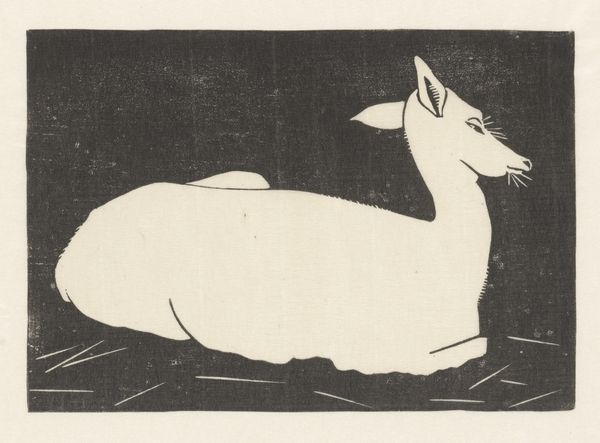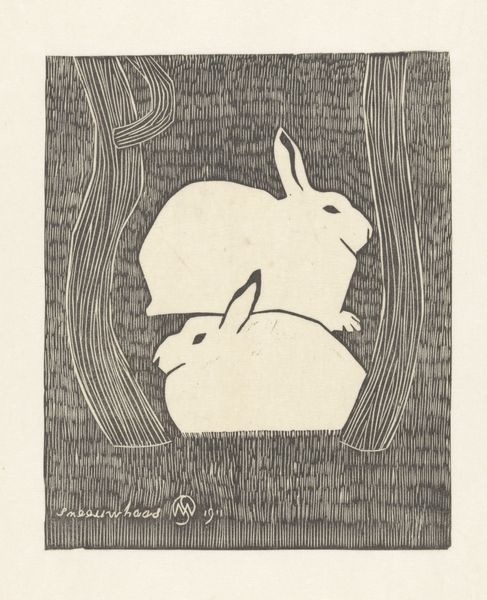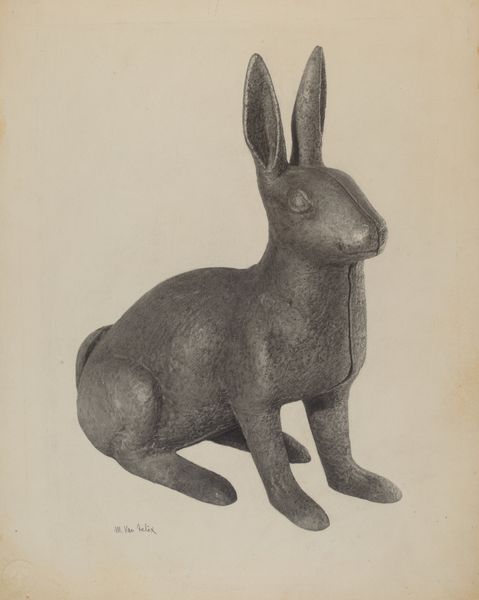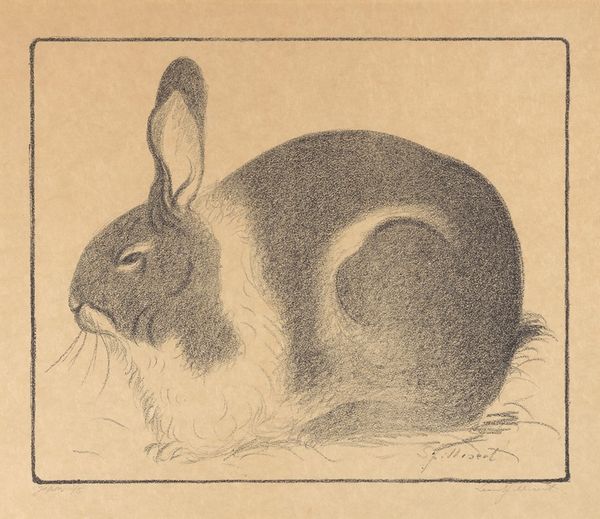
Dimensions: height 238 mm, width 153 mm, height 40 mm, width 54 mm
Copyright: Rijks Museum: Open Domain
Editor: This is "Konijn," or "Rabbit," a woodblock print created by Julie de Graag between 1923 and 1924. It’s a really striking image, almost like a logo in its simplicity. What do you see when you look at this print? Curator: I'm immediately drawn to the materiality. It's a woodblock print, so we have to consider the labor involved – the artist physically carving away at the wood to create this image. That process inherently connects art to craft. Notice also how the geometric form flattens the subject. Do you see the tension between the organic form and the manufactured line, highlighting the artist's control over natural depiction? Editor: Yes, I see how the rigid lines contrast with the soft curves of the rabbit. How does this connect to the period it was created? Curator: Precisely! Think about the context. In the 1920s, there was growing interest in mass production. Prints like this were relatively easily produced and could circulate widely. But, also it must be considered what that wide circulation did to ideas of artistic authenticity. Does readily available equate to cheapening artistic merit, or should artistic merit not be defined by commodity? Editor: So you're saying the material and the means of production challenge traditional notions of high art? Curator: Exactly! This simple image opens up discussions about labour, value, and the consumption of art. What happens when art can be owned so easily by many, and reproduced with minimum effort? Editor: I hadn’t thought about the implications of the production process itself so deeply before! Considering the social context of its creation makes this image so much more interesting. Thank you. Curator: My pleasure. Remember to consider art from all angles – the image is just a part of it.
Comments
No comments
Be the first to comment and join the conversation on the ultimate creative platform.

